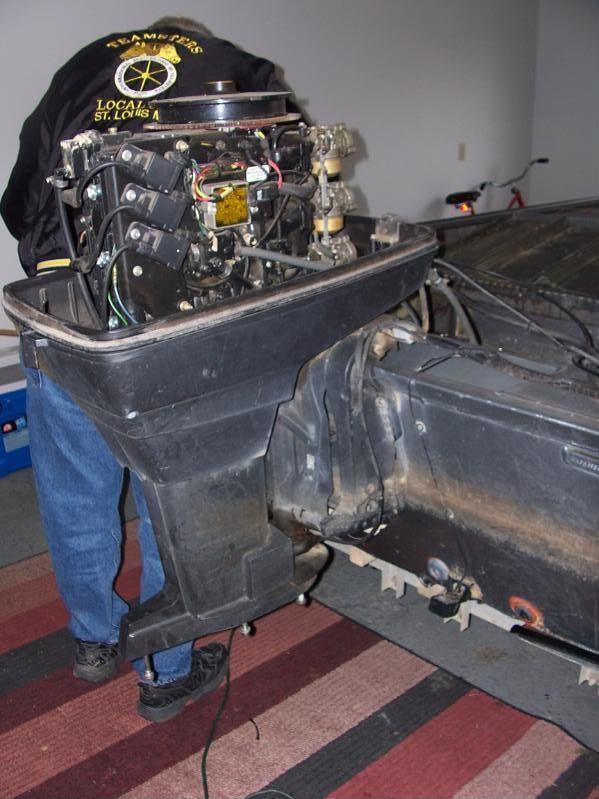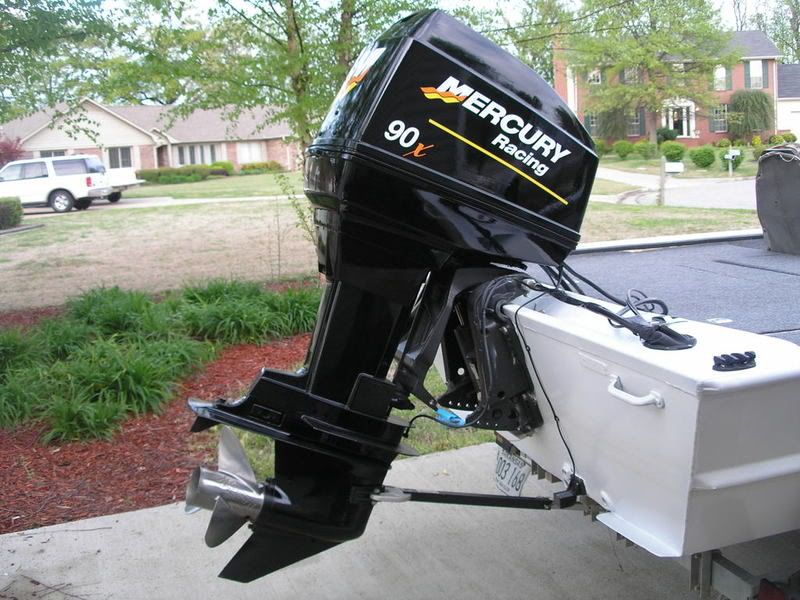Re: Before and After 90hp Force restoration
The reeds are already fairly responsive but if you want to try, Boyeson makes plastic reeds for it. They are supposed to gain a few horses--I don't know, I never tried them. I just don't like the look of them--call it personal opinion.
Even though you have a Mercury produced Force, the block is basically the same as old Chryslers and Forces. The only real changes Merc made to them was ignition and the midleg/lower unit
SO: Since the crankpins are 120 degrees apart and the ports are approximately 120 degrees total duration, it is possible to port these engines for a significant gain. Unfortunately, this involves a complete tear-down. But, you square and trumpet shape the ports, both bypass side and exhaust. Just remember, when you port the engine for power, it develops its horses at a higher RPM. You must prop it to turn this higher RPM to get the horsepower and speed. If you load it down, it will deliver less HP than stock. However, you will get slightly better gas mileage in the slower speeds. Now, for example, the Chrysler 140 I mention below is ported and it is really only happy at RPM above 6000. And at that speed, it really sucks down the fuel. Even with two fuel pumps, they can barely keep up with its needs. However, at cruise speeds it does get slightly better fuel economy. ----If you can call 4 1/2 MPG better than 4 MPG. If that was my car, I would junk it. I did try slightly larger jets in it and even though it is ported, they reduced speed slightly--1-2 MPH. So, stick with the stock jets.
You can mill the head about .060 for higher compression and still have piston clearance --but then you are looking at premium fuel. You can also experiment with venting the top ring and using a single ring for less drag; I have not yet tried that so I can't say if it helps or not. But hey! that's what the hobby is about.
A slightly illegal (only if you get caught) mod is to drill the lower unit to vent it above the cavitation plate (to reduce back pressure). But you drill it and countersink the holes to improve exhaust flow over a straight drilled hole.
To get into the higher RPMs, you will need to play with the prop. Since you NEED pitch to go fast, to reduce the load, you need to reduce the diameter. There are no racing props for these engines that I know of (unless you can substitute Merc props) so you are completely into custom work here. DEFINITELY GO STAINLESS. They give about 200-400 RPM more than the same prop in aluminum.
Do some research into engine height on the transom and cupping props. This alone can make a significant increase in speed. High engine has less drag but ventilates easily; cupped prop helps to control ventilation and allows more bow lift for less wetted surface.
If you want to see an example of porting, go to The Chrysler Crew, join, go to questions then photos. Look for Frank's Boats and you will see porting that yeilded 10 horsepower per cylinder. It was a 75 HP Chrysler that after porting put out power equal to a stock Chrysler 105. There are also photos of a Chrysler 140 restoration. (with a vented lower unit and an old bronze Merc racing prop.)
In the end though, realize that you have an engine design that is 50 years old; loop charged, short rods, heavy pistons, unpacked crankcase, etc.--there is only so much you can do to improve performance.























